Unfazed by the haze
 July 9, 2013
July 9, 2013

Divers and volunteers were stoked to be able to return to Pulau Hantu after last month’s short reprieve due to the haze from the forest fires in neighboring Sumatra, Indonesia. Water visibility was unexpectedly good compared to the previous month, which brought some relief to the few new divers who were about to make their inaugural dive in Singapore waters! (Above: Tomato anemonefish)
Right after our first descent, we were somewhat greeted by a little Carpet eel-blenny that was curious enough to pop its head out of a rock crevice to investigate our presence, but cautious enough to remain well within its hole to scoot right back in if we appeared menacing. And scoot right back it did! As soon as I took my camera out in front of it, it was no where to be seen.

There were plenty of fish on the reef, amongst them was this little dragonet above with its spiny dorsal fin looking somewhat like a piece of algae. It kept this fin swaying like a leaf on the reef while its soft dorsal fin remained rigid. I thought it interesting that its spiny dorsal fin is a pale colour instead of the mottled color, like its body, or the translucent color, like its soft dorsal fin. At first I thought this swaying leaf-like motion was for some purpose of camouflage, but I did wonder if, like the angler fish, the fin might have some other purpose like attracting prey. After some quick research, I learned that dragonets feed primarily on amphipods, copepods, and mysis shrimp, so I surmise that this theory is quite unlikely.

It was a relatively quiet day on the reef with just some sea slugs like this Phyllidia nudibranch.
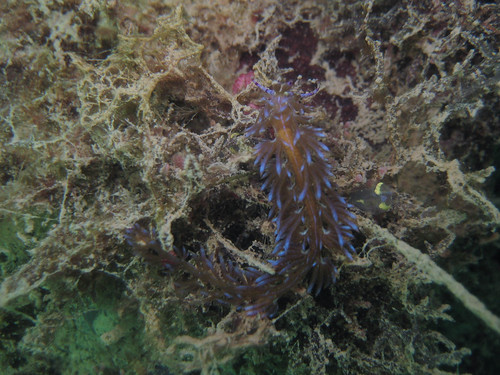
Several Pteraeolidia ianthina nudibranches were thankfully present to keep the reef spiced up. These nudibranches are quite common on Hantu’s reef so many divers might take them for granted. One of our volunteers, Joel Santiago, from the Philippines, shares that he really loves and enjoys seeing these nudibranches during our dives, as he does not encounter them when he’s back home and finds them really special. Perspectives like this can help us become aware of and value our unique natural heritage!
This weekend’s trip was focused on introducing Hantu’s reef environment and wildlife to two new volunteers who are in training. So admittedly, I didn’t spend too much time photographing fast swimming wildlife. That’s not to say that we didn’t get to see a few small schools of razorfish, Six banded angelfish, Vermiculated angelfish, Long-beaked butterflyfish, Eight-banded butterfly fish, Streaked rabbitfish, Orange-spotted rabbitfish, Yellowtail barracuda, Goldenback fusiliers and several individuals of Paradise and Butterfly whiptails!
The main distraction this weekend has got to be what appears to be a mass coral bleaching at Pulau Hantu. Ria Tan blogged about this too after her visit to Terumbu Hantu last week. It was very worrying to see the big colonies of Porites (above) bleaching.
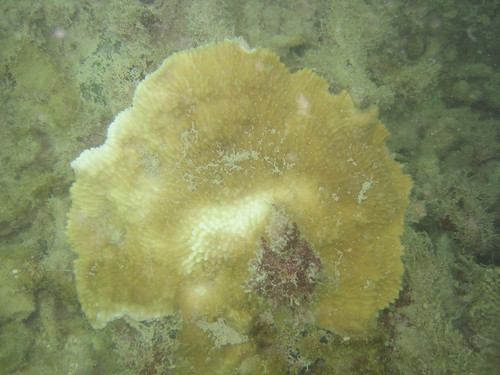
Coral bleaching is the loss of intracellular endosymbionts (also known as zooxanthellae) through either expulsion or loss of algal pigmentation. The corals that form the structure of the great reef ecosystems of tropical seas depend upon a symbiotic relationship with these zooxanthellae that are photosynthetic and live within their tissues. Zooxanthellae give coral its coloration, with the specific color depending on the particular clade. Under stress, corals may expel their zooxanthellae, which leads to a lighter or completely white appearance, hence the term “bleached”. [1]
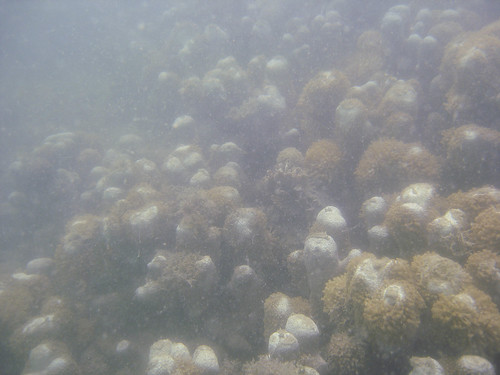
Along the reef slope, several colonies of Goniopora coral are showing signs of bleaching.

Bubble coral like Plerogyra also showing signs of bleaching.

As was this huge colony of Euphyllia coral, which is another kind of bubble coral commonly known as anchor coral.
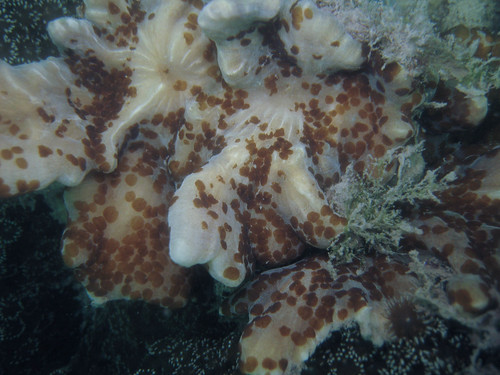
There are also many colonies of Pectinia that had Aceol flatworms smothering their surface.
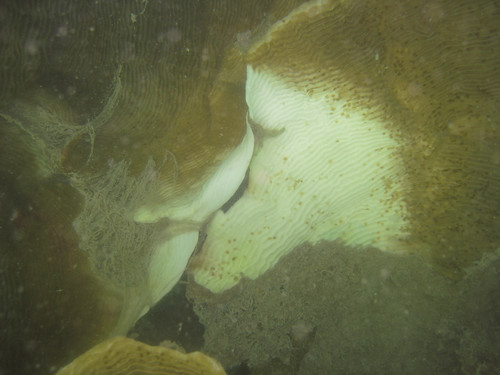
Some obvious signs of bleaching on this Serpent coral that is also covered with a layer of Acoel flatworms.

Here’s a closer look at those flatworms.
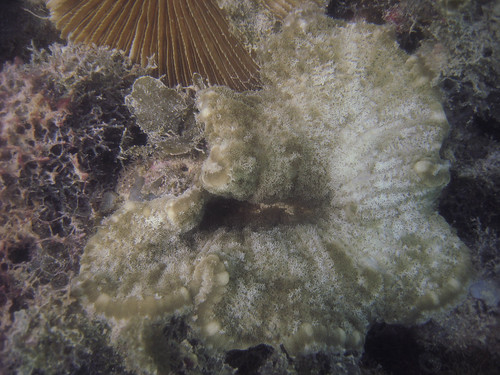
This anemone is also showing some signs of bleaching.

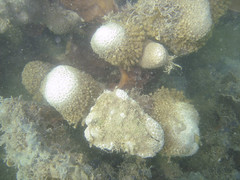
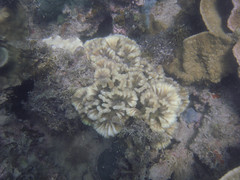

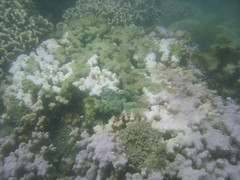

Learn about mass coral bleaching: In this post on the Bleach Watch Singapore blog and check out Karenne Tun’s presentation done for the 1988 bleaching event. You can also report sightings of coral bleaching at the Bleach Watch Singapore facebook page, or Bleach Watch Asia facebook page if you are diving in the region. Do also share photos and any observations you have with the community to we can help understand this phenomenon a little better.
To see all the photos from this dive, visit the Hantu Blog Gallery.
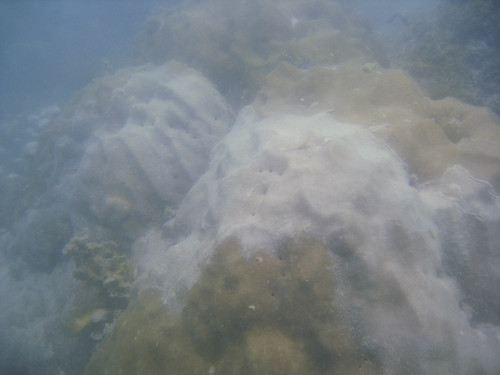
 Posted in
Posted in 



 content rss
content rss
COMMENTS